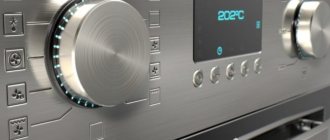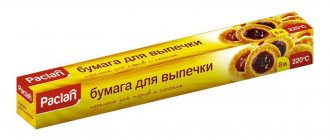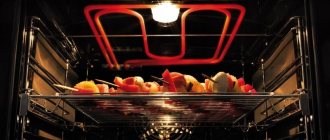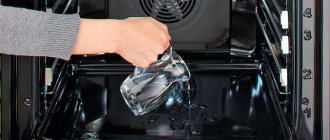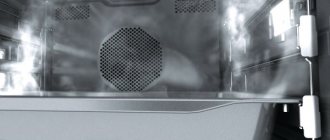Today there are two types of gas boiler designs: convection and condensation. Each of them has its own advantages and disadvantages, both types of design are in wide demand and are produced in the form of more and more modern models. Outwardly, they are indistinguishable in any way, and the design differs only in a few engineering solutions.
In order to comprehensively understand all the nuances of financial benefits, ease of installation and ease of use, it is important not only to weigh all the advantages and disadvantages of each type, but also to understand their operating principle and make economic calculations, which is what we will do in this article.
Convection in the oven: what is it?
The word “convection” itself comes from the Latin convectio, which literally translates as “delivery.” Convection is a special type of heat exchange process, the transfer of internal energy occurs in directed jets. Previously, in our kitchens there were standard ovens that were almost no different from each other. The bottom was equipped with a double bottom, inside of which the burners were located. After the oven had warmed up, baking trays with baked goods could be placed in it. The top of the pie or roast goose was browned only due to the movement of heated air masses. At the same time, a fairly common case is when dishes are unevenly baked or burnt. Sometimes I had to turn the pan over, risking ruining the dish.
Modern technology makes the work of housewives easier
In modern kitchens today, ovens with a convection function are increasingly found. In most cases, they have two or more heating elements on the top and bottom. But even in such models, food sometimes burns and is not cooked through. So what is it - convection mode in the oven? After all, the quality of cooking depends on it.
Convection is the process of movement of thermal masses inside the enclosed space of a cabinet. The attentive reader will definitely understand that even in the old type of technology it is necessarily present, since this process is absolutely natural. The movement of thermal energy allows food to bake faster. How uniformly and efficiently this happens is another question. Manufacturers of modern technology are trying to solve this problem.
Soviet ovens served well for decades
Why is convection needed?
It is difficult to overestimate the advantages of the convection mechanism in an electric oven or other device. This technology is provided in most modern household ovens. First of all, it is indispensable when baking large pieces of meat, pies, making pizza, grilled chicken or toast.
Convection promotes uniform cooking of the dish, with its help you can avoid burning in one part of the dish and inadequate baking in another. Previously, to do this, you had to constantly turn the sheet over and change the position of the dish on it. The technology allows you to cook large pieces of fish or whole meat. In addition, convection adds a number of advantages:
- rapid warming up of cold air, accordingly, saving time to obtain the desired temperature;
- the appearance of a crispy crust, the ability to dry out an overly juicy dish;
- possibility of simultaneous preparation of several dishes;
- in the presence of moist convection, food is partially steamed, retaining more beneficial properties and minerals.
Principle of operation
The operating principle of convection is based on an active heat exchange process, which is achieved using a powerful fan located on the rear wall of the heating chamber. It accelerates the movement of air flows, thereby facilitating rapid heating of the oven volume.
Types of convection
Convection is classified according to various criteria. The complexity of the system comes first. It happens:
- simple – represented by several fans;
- complex - heating elements are equipped with built-in fans.
It is not very convenient for an ordinary user to use such a classification. The division based on the operating principle looks much clearer.
- Natural. Air mass transfer occurs. The operating principle is based on the laws of physics. Heated air rushes up, cold air goes down
- Forced. This principle is used in all modern electric stoves. Cheap products are equipped with only one fan. Expensive models have reinforced instruments. They are considered the most effective for cooking. In addition to creating powerful, uniform heating, they are capable of maintaining the required temperature for a long time.
- Wet. A new model that has not yet become widely popular. Creates fine steam in an electric oven. It improves the rise of baked goods. The food will never be dry.
Good to know! The wet type allows you to cook food without adding oil. It is simply impossible to fry the dish.
Natural
It represents the usual distribution of thermal air flows and is not an additional option. In other words, such convection is present in every oven. It functions according to the usual physical principle. Warm air rises when heated, and cold air sinks. This leads to natural circulation of currents inside the oven. You won’t have to pay extra for this option, since it is not the “fruit” of engineering intervention, but it is this convection that is considered the least effective.
How does an oven with convection function work?
Having dealt with the question of what the term “convection” means in an oven, let’s move on directly to the structure of the device. So, this one differs from a regular oven by the presence of a fan, which is called a convector. It is this that moves the hot air.
The convector can be:
- simple;
- complex.
The first one performs only the function of blowing, while the complex one complements the equipment with additional functions:
- providing additional heating due to the presence of a heating device - heating element;
- fast cooking due to the built-in amplifier;
- Possibility of steaming food in the presence of a steam generator.
Thus, the forced convection mode is necessary if you often cook in the oven or like to bake.
Having selected the desired mode and turned on the timer, you can go about your business
Most modern ovens are also equipped with an electronic display that shows the current time, baking time, and the selected mode icon.
Examples of the best models with CD
Each buyer can highlight his own rating of the best gas devices with pressurized pressure. Here is the following list:
Most modern oven models have many additional functions and options, such as convection. What is its feature, is it needed in the oven of an electric stove? Let's look into this issue together.
Oven convection mode icon and other pictograms
Already in the store, one cannot help but notice on the equipment panel various icons that indicate a functional range. It’s not difficult to guess what exactly the icon means. Thus, the dashes indicate the heating elements, the teeth indicate the grill function, and the convector is drawn as a fan. By setting the desired mode, you can either fry the dish or make the crust crispy. Below is a description of the icons, among them in the photo is the convection icon in the oven.
All functions with explanation
How to use the option?
Detailed instructions for using the oven are included with each electric stove, but there are several rules that experts in household kitchen appliances recommend taking into account:
- The option does not require preheating the oven. Advance heating to a certain temperature may be required when preparing dishes that require this, for example, meringues, bread, soufflé.
- Using a convector means that baking and baking occurs at higher temperatures. Therefore, when setting the mode, you should make an adjustment of 20-25 degrees downward.
- When dishes occupy the entire usable area of the oven, the cooking time increases when the convector is turned on. This is due to the fact that there is no space for free air circulation.
- Different foods take different times to cook. Be sure to monitor this and remove the baking sheets before the dish burns.
- The convector allows you to cook frozen foods without defrosting. The main thing is to initially preheat the oven for 20-40 minutes.
If you follow these simple rules, using the option will be a pleasure.
How the convection mode is used in practice
In practice, the convector allows you to achieve amazing results. Thick pieces of meat and fish are baked with high quality and get an even crispy crust on all sides. The dish turns out moderately juicy. The mode significantly simplifies the process of preparing complex dishes, while saving energy consumption (gas or electricity).
Advantages of slabs with CD
- Simultaneous preparation of several dishes. This uses several levels. All kinds of burning and raw food are excluded.
- The oven reaches the desired temperatures faster. The cooking process time is reduced. Gas is consumed more economically.
- Any dish is baked evenly and on all sides.
- You don't need to use a lot of oil for the process.
- Eliminates odor from the oven.
- Semi-finished products are defrosted at high speed.
- Mushrooms, herbs, greens, vegetables and fruits are perfectly dried.
Convection mode indicators
The main differences between wet convection, enhanced and dry
- Wet circulation. With this technology, in addition to the usual heating of the air, it is also actively saturated with moisture. This makes this convection ideal for steaming dishes.
- Increased circulation. The main detail in this case is a reinforced powerful fan. Perfect for those cases when you need to achieve a crispy crust on the surface of the dish.
- Forced dry circulation. In this case, the oven contains several fans, which also often have additional heaters.
The most useful programs
- Normal convection. Used for heating dishes, preparing dough before baking, drying herbs, berries and fruits.
- Convector, bottom heater and grill. This is the optimal mode for cooking semi-finished products.
- Convector and bottom heater. This mode is ideal for baking pizza, pies, and bread.
- Turbo grill. When this mode is turned on, the top heater, convector and grill are activated immediately. Good for cooking large pieces of meat.
All of these modes, except regular convection, should be used for a baking tray set at the same level.
Double convection
There are also models on the market with two convectors installed simultaneously. The main brand that produces such ovens is Samsung. The presence of two fans allows you to distribute and warm up the air masses much more efficiently.
Before purchasing equipment with this function, you should make sure that such a choice will be justified. The presence of this function significantly increases the cost of the equipment. The choice is appropriate if you plan to regularly prepare dishes in this mode.
Application of humid convection
Ovens in wet convection mode are used for steaming various meat, vegetables and other dishes. The design of ovens with a similar mode consists of the following elements: a fan, a special container for water and a generator that converts water into steam.
Types of convectors
Since the appearance of the first ovens with convection function, various types and modifications of this technology have appeared. And today there are many types of them:
- A fan is the simplest type of convection. The bottom line is that when the fan blades operate, the air inside begins to actively move and mix, resulting in uniform baking of dishes.
- Fan with ring heater. This is already a more efficient system. In this case, the fan has an additional heating element, as a result of which warm air flows fill the space much faster.
- Reinforced convector. The meaning lies in the name itself. Essentially, this is the same fan, but much more powerful. With such a system, the air warms up much faster and more intensely. The food in the oven quickly becomes covered with a thin, pleasant crust on top.
- Moist convection. In this case, a steam generator is also built into the oven, due to which the air inside is actively saturated with steam. This is stewing, not frying. At the same time, the dishes turn out juicy, they retain more nutrients.
- Double convection. With this type of convection, which is also installed on some oven models, two fans are located opposite each other, each of which forces air masses to circulate at its own level. This type is most convenient when preparing several dishes at the same time.
Nuances of fan operation and shutdown
In electric ovens, the convection fan turns on during preheating, even if you are not using convection cooking. We wrote about connecting a gas stove with an electric oven here.
In gas stoves it does not turn on during this period. During convection cooking, the convector will typically run for about 10 seconds, then turn off for about 40-60 seconds. The working cycle of the convector in different modifications may vary, for example, work and rest for an equal amount of time.
Ways to turn off the fan
Because there are many different models of convection fans, the process for turning off the fan may vary.
Method #1 - turn off convection
Turn off the convection option . Some oven models have the ability to turn off the convection function. The fan turns off automatically.
Method #2 - open the door
In the design of many models, when the oven door is opened, the fan immediately turns off. It will turn on again when the door closes. To turn off the convector, open the oven door during cooking.
Method #3 - Cool the oven
Turn off the oven and let it cool. During cooling, the fan may remain on for a while. It will eventually turn off.
A tangential cooling fan is also called a diametrical fan. It creates a uniform, flat flow of cooling air. The fan performs double movement of the air flow perpendicular to the axis of the rotating impeller
The cooling fan is supposed to run until the oven cools down.
Method #4 - Switch Oven Settings
If you have a combination oven with a conventional oven, switch the setting to normal operation. If the oven is a combination oven, changing to the normal setting according to the manufacturer's instructions will usually result in the fan turning off.
Safety of installation and operation
All models of gas ovens have several systems that ensure safe operation. So, the door glazing is made multi-layered so that the scalding temperature does not reach the outer surface of the door. So that even a child looking through the “porthole” at a chicken rotating on a spit will not get burned. He will not be able to participate in controlling the oven and opening the door, thanks to the lock.
In addition, as mentioned above, heat is removed from the surface of the oven by an internal electric fan.
The control panel of a gas device is much simpler than that of an electric one. In addition to the timer (1), the panel contains a temperature regulator (2) and a mode switch (3). Power on indicator (4)
The gas supply is blocked automatically if:
- the burner goes out accidentally;
- a gas leak occurs;
- The pressure in the gas line drops.
To install a gas oven, you must invite a specialist. He will not only safely connect the gas, but will also check the compliance of the technical device with the type of gas (natural or liquefied) and, if necessary, replace the nozzle.
Additionally, it is necessary to install exhaust equipment. To connect to the electrical network and gas, you need to contact specialists.
The electrical outlet must be of the correct type and must be grounded. In addition to the above, it is necessary to take measures to ensure free access to the oven and its removal. Therefore, it is important to properly prepare the place.
Selection principles
KD can be in both electric and gas models. There are also combined versions on sale. Their equipment includes a hob (gas) and an oven (electric). In some modifications, gas burners are combined with electric ones.
- Burners. Gas burners can have different shapes and power. Today there are a lot of models with round burners. There are triangular and oval versions. Some appliances have burners with 2-3 lines of flame.
- Cooking area. There are two options for its manufacture: enameled and stainless steel. The price of the first option is small. It has a wide range of colors. Solid hygienic properties are noted. For your information! The second option is more expensive. But it is much easier to clean. Recently, a third option has become relevant - an aluminum alloy that has undergone special processing. It has powerful performance characteristics. It requires minimal care. And such surfaces are resistant to scratches and tarnishing.
- Gas control. This option or its analogue is an excellent protector against gas leaks. Principle: The gas is automatically shut off if the flame goes out unexpectedly.
- Presence of electric ignition. Its versions: mechanical and automatic. To start the first option, turn the power relay and press the ignition button. The second version starts immediately after turning this relay.
- Presence of a timer. Its variations: mechanical and electronic. The first one only signals the end of the specified time. The second program programs the operation of the oven and one burner, automatically turns the oven on or off at a given time.
- Oven volume. The more food you plan to cook, the larger the oven. Very large ovens have a maximum range of options. Such versions are preferred by particularly hospitable hostesses.
- Oven cleaning method. Modern technologies greatly simplify stove maintenance. Cleaning the oven is easier thanks to the non-stick enamel. It is resistant to various stains. The hydrolysis or pyrolytic method of cleansing is simply a lifesaver for all housewives. The essence of the first: a baking sheet is placed in the oven, water with a cleaning agent is poured into it, the oven heats up, all the dirt in tandem with the steam ends up in the pan. The essence of the second: the oven is brought to high temperatures, for example, 250 degrees. Under such conditions, all the dirt burns. To achieve maximum cleanliness, you need to wait until the oven has completely cooled down and wipe it with a damp paper cloth. Some ovens have built-in filters to absorb grease and odors.
Tips and tricks
Using this option is very simple and convenient. Each model of electric stove has its own detailed instructions that will help you understand all the intricacies of operation.
But still, we have some useful recommendations for you that will definitely come in handy.
- To use the additional function of convection, the oven does not need to be preheated. This only needs to be done if you are preparing meringues, bread, or if the recipe for a certain dish requires it.
- Please note that during convection operation the oven operates at a very high temperature. Therefore, this should be taken into account when setting the usual mode. For example, if the recipe requires you to bake a dish at 250°, then with convection you should set the temperature 20-25° lower. That is, not 250°, but 225°.
- If you are baking a large dish, for example, a pie, which takes up as much of the usable space in the oven as possible, then you need to increase the cooking time. This is because there will be no room for free air circulation in the inner chamber, so the dish will take longer to cook.
- Thanks to this option, you can cook frozen food without first defrosting it. Just preheat the oven for 20 minutes and then start cooking.
Sources
- https://HomeMyHome.ru/konvekciya-v-dukhovke-chto-ehto-takoei.html
- https://hoznauka.ru/tehnika/konvektsiya-v-duhovke.html
- https://homeasking.com/chto-takoe-konvekciya-v-duhovke-elektricheskoj-plity/
- https://superarch.ru/texnika/chto-takoe-konvekcziya-v-duxovke-elektricheskoj-plityi
- https://tehnika.expert/dlya-kuxni/duxovka/dlya-chego-nuzhna-konvekciya.html
- https://sovet-ingenera.com/gaz/equip/chto-takoe-konvektsiya-v-gazovoy-duhovke.html
- https://stroy-podskazka.ru/plity-kuhnya/elektricheskie-plity/konvekciya-v-duhovke/
Peculiarities
Models with this option have the ability to heat up much faster, which saves time and electricity during cooking. Due to the fact that hot air is distributed as evenly as possible throughout the entire inner chamber of the oven, this allows dishes to bake evenly on all sides. Even if you bake a large pie, thanks to this function it will be golden brown and baked on all sides.
The main thing is that you do not have to unwrap the prepared dish during the cooking process.
If the oven has an additional function such as a grill, then in combination with convection this will allow you to perfectly bake even a large piece of meat. Thanks to this option, the meat will acquire an appetizing golden brown crust during baking, while the inside will remain tender and juicy. Convection helps cook many meat dishes perfectly without drying them out.
Another benefit of this feature is that you can easily cook multiple dishes at the same time. Since hot air will be evenly distributed throughout all levels and corners of the oven, you can easily bake two or three trays of your favorite pies at once.
And rest assured that they will all be perfectly golden brown and baked.
